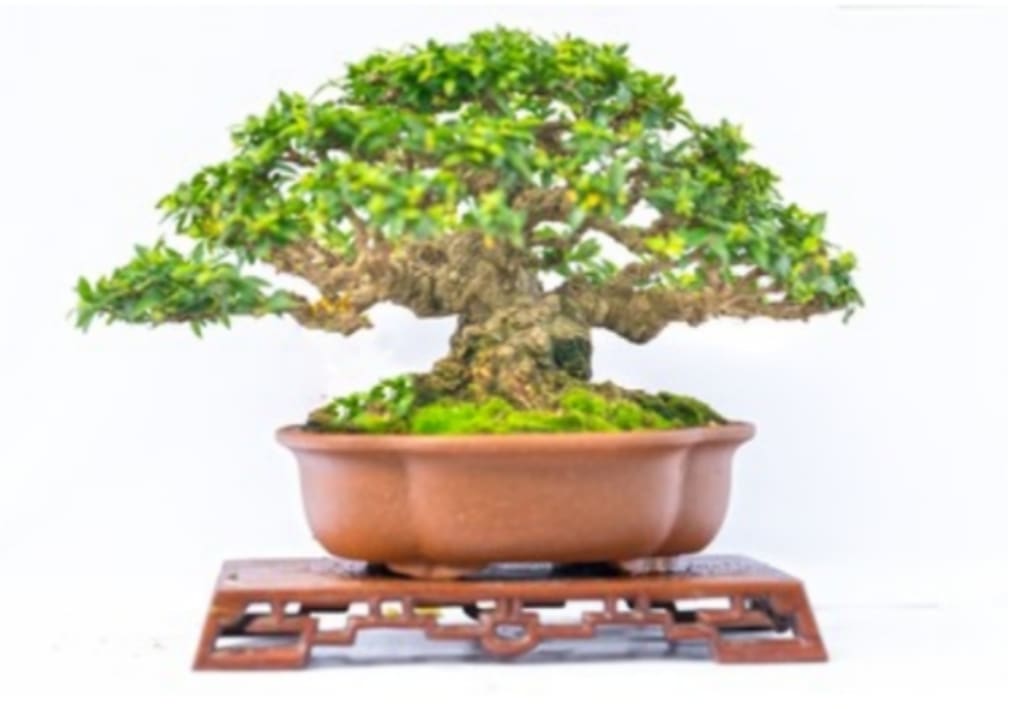Bonsai, a centuries-old practice rooted in East Asian culture
The art of bonsai, a centuries-old practice rooted in East Asian culture

The art of bonsai, a centuries-old practice rooted in East Asian culture, transcends mere horticulture. It embodies a philosophy that merges nature, art, and mindfulness, demanding a deep understanding of aesthetics, patience, and respect for life. Bonsai, which means "planted in a container," originated in China over a thousand years ago as "penjing," and later evolved in Japan into the form we recognize today.
Philosophical Underpinnings
Bonsai is not just about growing miniature trees; it is a meditative practice that reflects a philosophy of harmony and balance. Central to this philosophy is the concept of "wabi-sabi," a Japanese aesthetic that finds beauty in imperfection and transience. Wabi-sabi embraces the natural cycle of growth and decay, valuing the uniqueness of each tree's form and the passage of time evident in its aged bark and twisted branches.
This practice encourages mindfulness and a deep connection with nature. By cultivating bonsai, practitioners engage in a dialogue with the tree, learning to respect its needs and rhythms. This relationship fosters a sense of humility and patience, as bonsai cultivation is a lifelong commitment that can span generations. The trees are often passed down as family heirlooms, symbolizing continuity and legacy.
Aesthetic Principles
The aesthetic principles of bonsai are grounded in simplicity, asymmetry, and the natural beauty of the tree. Bonsai artists aim to create a harmonious balance between the tree and its environment, considering factors such as proportion, scale, and perspective. Key elements include:
1. Balance and Harmony: Unlike symmetrical Western aesthetics, bonsai emphasizes asymmetry to create a more natural and dynamic balance. This approach mirrors the imperfections and unpredictability of nature.
2. Proportion and Scale: The tree and its container should be proportionate, creating a miniature landscape that appears both realistic and aesthetically pleasing. The size and shape of the pot are chosen to complement the tree's form and enhance its visual impact.
3. Perspective: Bonsai is designed to be viewed from a specific angle, usually the front. The artist carefully arranges branches, leaves, and other elements to guide the viewer's eye and create a sense of depth and perspective.
4. Naturalism: The goal is to evoke the essence of a full-sized tree in nature. Techniques like pruning, wiring, and shaping are used to mimic the tree's natural growth patterns, giving the impression of age and maturity.
Practical Techniques
The practice of bonsai involves a variety of horticultural techniques that require skill, precision, and an understanding of tree physiology. These techniques include:
1. Pruning: Selective pruning of branches and roots is essential to maintain the tree's miniature size and desired shape. This process requires careful planning and execution to ensure the tree's health and aesthetic appeal.
2. Wiring: Copper or aluminum wires are used to guide the growth of branches and trunks, shaping them into the desired form. This technique is temporary; once the branches hold their new shape, the wires are removed to prevent scarring.
3. Repotting: Regular repotting, typically every two to five years, is necessary to refresh the soil, trim the roots, and prevent the tree from becoming pot-bound. This process also provides an opportunity to reassess the tree's composition and make adjustments.
4. Watering and Fertilizing: Bonsai trees require consistent and careful watering, as they are confined to small pots and have limited access to nutrients. Fertilization is also important to support growth and health, with the type and frequency of fertilizer varying based on the species and season.
5. Pest and Disease Management: Vigilant care is needed to protect bonsai trees from pests and diseases, which can be more challenging to manage in a confined environment. Organic and chemical treatments may be used as necessary.
Cultural Significance
Bonsai holds significant cultural and spiritual meaning in East Asian societies. In Japan, it is seen as a reflection of Zen principles, promoting tranquility, contemplation, and a deep connection with nature. The practice of bonsai is often integrated into daily life, serving as a form of meditation and a reminder of the impermanence of life.
In contemporary times, bonsai has transcended cultural boundaries and gained popularity worldwide. It is celebrated in international exhibitions, clubs, and competitions, with enthusiasts sharing knowledge and techniques across cultures. Despite its global reach, the essence of bonsai remains rooted in its traditional principles and philosophy.
Conclusion
The art of bonsai is a profound blend of philosophy and practice, requiring dedication, patience, and a reverence for nature. It is an art form that teaches balance, simplicity, and mindfulness, fostering a deep connection between the artist and the tree. Through the meticulous care and shaping of bonsai, practitioners not only create living works of art but also engage in a timeless dialogue with nature, honoring its beauty and impermanence.
About the Creator
Enjoyed the story? Support the Creator.
Subscribe for free to receive all their stories in your feed. You could also pledge your support or give them a one-off tip, letting them know you appreciate their work.






Comments (1)
Hey, just wanna let you know that this is more suitable to be posted in the Earth community 😊